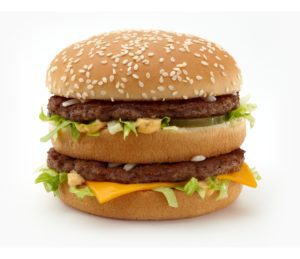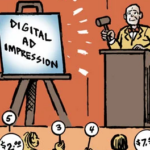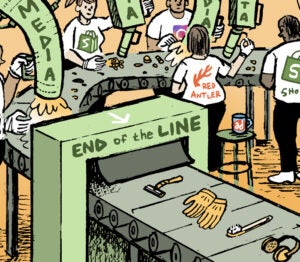McDonald’s is on a “mass personalization” push to attract more millennials.
Even though it markets to national audiences, many of its fast-food restaurants operate as local franchises. Thus, McDonald’s must create content that resonates at a community level in addition to its national assets.
To pull off an operation at McDonald’s scale requires unity among many corners of its enterprise – including marketing, advertising, research and customer care. McDonald’s new digital command centers serve as the brain behind it all.
Paul Matson, director of customer experience and social engagement for McDonald’s, spoke with AdExchanger about content and technology’s role in McDonald’s marketing strategy.
AdExchanger: What do you do at McDonald’s?
PAUL MATSON: I sit in the marketing department right in the mix of the paid, earned and owned continuum. My role comes down to how we talk to consumers. If you’re not in the restaurant at the point of purchase or at the drive-through, what are your interactions with McDonald’s, and where do we have a dialogue with you?
What business units do you work with?
My role is overseeing our US business unit, [focused on] personalizing our communications. It’s something every brand worth its salt has been going after for years, and this idea of mass personalization spans applications in CRM as well as social. The spectrum of where that’s expanded is advertorial, and then the opposite side of that is what we do on the customer support and experience side. The greatest challenge that will always be unique to McDonald’s is our scale.
Why is that a challenge?
Talking to almost every single person in the US population – and in a hurry – can be very expensive. The greatest challenge with mass personalization is: How do we keep a human touch without increasing our costs one to one with every single customer? And that’s where technology plays a critical role, and a platform like Sprinklr helps us [automate] a lot of the process. Social gives us the opportunity to still be that global brand, but human.
How are you using it?
Sprinklr helps us delineate where we see the most opportunity and which customers we need to prioritize based on their need or their history with us – quickly. We’re still one of the most talked-about brands on the Internet, often more so than Starbucks and a lot of our competitors. It’s become a repository for everything we’ve said and advertised, nationally and locally.
 How much of an emphasis does McDonald’s place on localization?
How much of an emphasis does McDonald’s place on localization?
We have almost 14,300 restaurants in the US alone. The majority of those are owned and operated by individual franchisees, and they know their community best. What you’ll often see with a brand like McDonald’s is diversity in messaging, even if we have one common campaign going on.
For example, for a recent campaign for the Big Mac, we had the Grand Mac, Mac Junior and our traditional size. We had our national advertising, and then we had a variety of versioning and locally relevant applications of that same campaign. Sprinklr lets us see what’s making waves and generating the most national interest to find opportunities to amplify further.
Where is there more opportunity to get localized?
I think one of the most powerful forms of advertising, and a big component of personalization, is what’s near you geographically. With mass advertising and big campaigns around Big Macs, a lot of micro-stories go out daily nationwide. For instance, if a local basketball team is going to their first district championship, what role can McDonald’s play in that story? We look at what’s going on organically at the hyper-local level.
How do you choose which platforms you invest in?
We don’t pander for engagement. There are lots of new formats and new channels, like Snapchat’s Spectacles, and when those came out, a lot of brands jumped on the bandwagon immediately. There is something to be said for being a brand that is an early adopter of new formats. But the balance we try to make is understanding what’s innovation for the sake of innovation vs. a natural place for our brand.
One of the hardest places for us to break into initially was live video. Think about all the inherent risks of doing something live and having it broadcasted out to the Internet. You mitigate risk where it’s appropriate, and we have a lot of stewardship that goes on with our legal counsel, who’ve been very forgiving, I’ll add.
Which channel is most interesting to you, purely in terms of engagement?
One of our advantages is we have a lot of distribution relationships with a lot of major platforms you see out there like Facebook, Snapchat and Twitter. Whenever a new product is out, we’ve frequently been one of the first to adopt it. In 2015, we were the first brand to launch Geofilters on Snapchat across the entire US. We were one of the first brands to run a 360-degree video on YouTube.
We don’t do things first for the sake of being first. We tend to be very strategic. Where we see a lot of organic interest is on short, live video. These micro-moments where we can experience things in real time. I’m less interested in 360-degree video as a long-term play. It can be very cumbersome.
Interview edited for clarity and length.














